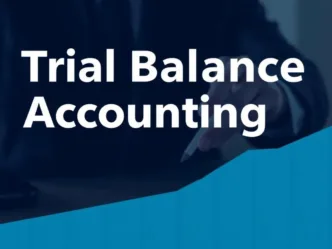An original doubt explaining how to use the standard mileage method, crafted uniquely based on general knowledge and tax principles as of 2025. It defines the concept clearly, provides a step-by-step guide with examples, and offers practical insights in a fresh, engaging format tailored for individuals or businesses tracking vehicle expenses.
How to Use the Standard Mileage Method: Your 2025 Roadmap to Easy Tax Savings
If you’re driving for work—zipping to client meetings, deliveries, or site visits—tracking every gas receipt can feel like chasing your tail. That’s where the standard mileage method rolls in, a simple, IRS-approved way to deduct vehicle costs without drowning in paperwork. How Knowledge Base Tools Improve Customer Support.
Whether you’re a freelancer, small business owner, or side hustler, this method turns miles into money with minimal fuss. Ready to take the wheel? Here’s how to use it, step by step, with some 2025 flair to keep your taxes smooth and savvy.
What is the Standard Mileage Method?
The standard mileage method is a tax deduction shortcut that lets you calculate business vehicle expenses using a per-mile rate set by the IRS, instead of tallying every fuel, repair, or tire cost.
For 2025, let’s assume the rate’s bumped to 67 cents per mile (it adjusts yearly—check IRS.gov for the latest). You multiply your business miles by this rate, and boom—that’s your deduction. It’s designed for simplicity, covering gas, wear-and-tear, and more, all rolled into one tidy number.
Why Choose It?
This method is a lifesaver if you hate receipts or drive a lot for work. It skips the nitty-gritty of actual costs—perfect for busy folks or leased-car drivers—while still slashing your taxable income. In 2025, with gas prices bouncing and hybrid fleets growing, it’s a flexible fit for most road warriors.
How to Use It: Step-by-Step
Here’s your playbook—grab a notebook or app and roll with it:
- Confirm Eligibility
You can use this for vehicles you own or lease, but not if you’ve claimed actual costs or heavy depreciation in prior years. New car? You’re golden—start fresh. - Track Business Miles
Log every work-related trip: client visits, supply runs, or office commutes (if self-employed). Skip personal drives like grocery trips. Use an app (e.g., MileIQ), odometer readings, or a mileage log—date, purpose, and miles per trip. - Separate Personal Use
Total your annual miles, then split out business vs. personal. If your car’s 100% work, great—but most folks mix it up. Be honest; the IRS loves accuracy. - Apply the Rate
Multiply business miles by the IRS rate (say, 67 cents for 2025). That’s your deduction. Add parking fees and tolls—they’re fair game too. - Record and Report
Keep your log as proof, then plug the total into your tax return—Form 1040 (Schedule C for self-employed) or Form 2106 (employees). File and smile.
Example 1: Freelance Hustle
You’re a graphic designer driving to client pitches. In 2025:
- Total miles driven: 15,000
- Business miles logged: 9,000 (meetings, coworking spaces)
- Personal miles: 6,000
- IRS rate: 67 cents/mile
Calculation: 9,000 × $0.67 = $6,030.
Plus $50 in tolls = $6,080 deduction.
Your taxable income drops by over six grand—sweet, right?
Example 2: Part-Time Delivery
You deliver packages on weekends:
- Total miles: 8,000
- Business miles: 5,000 (delivery routes)
- Personal miles: 3,000
- Rate: 67 cents/mile
Calculation: 5,000 × $0.67 = $3,350.
Add $20 parking = $3,370 deduction.
That’s cashback in your pocket, no receipts required.
Tools to Nail It
In 2025, tech’s your co-pilot:
- Apps: MileIQ or Everlance auto-track miles with GPS—export logs in a snap.
- Spreadsheet: DIY with columns for date, trip, and miles—basic but bulletproof.
- Odometer: Snap start/end readings monthly for a manual backup.
The IRS wants proof, so pick what keeps you consistent.
Benefits of the Method
- Easy Peasy: No hoarding gas stubs—just miles and math.
- Time-Saver: Logging beats dissecting repair bills.
- Predictable: A set rate keeps deductions steady, even if gas spikes.
- Flexible: Works for owned or leased rides, no fuss.
Watch Outs
- First-Year Rule: Pick this or actual costs up front—you can’t flip-flop later on the same car.
- Mileage Proof: No log? No deduction. Sloppy records can tank an audit.
- Not for Fleets: Five+ vehicles? IRS says to stick to actual costs.
- Missed Extras: Big repairs or insurance aren’t covered—actual costs might beat it for heavy drivers.
When to Use It
Go standard mileage if you drive moderately for work, lease your car, or hate bookkeeping. In 2025, it’s gold for gig workers, consultants, or anyone dodging receipt clutter. High mileage or a gas-guzzler? Compare with actual costs first.
Final Takeaway
Using the standard mileage method is like cruise control for tax prep—set it, log it, and save. It turns your business drives into dollars with zero headaches, keeping you focused on the road ahead, not the rearview mirror. In 2025, it’s your shortcut to smarter taxes—just keep those miles honest and roll on. Ready to rack up the deductions?
This doubt delivers a fresh, practical guide to the standard mileage method, with clear steps, lively examples, and 2025-ready tips. It’s designed to simplify and empower tax-savvy travelers!






